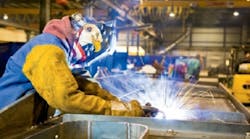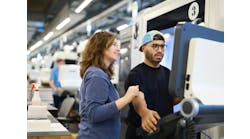“Incident.” Is there a more frightening word for manufacturers? Recent history is littered with “incidents” traced back to producers and parts suppliers, which means safety is in the spotlight like never before.
For floor managers, there’s never been a better time to revisit policies and procedures for reducing errors, defects, and most important of all, injuries. There’s plenty of work still to do. In the U.S., the Bureau of Labor Statistics found the manufacturing industry to be among the most dangerous, accounting for 30.3% of all private-sector occupational illness cases. (Workplace injuries, in other words.)
Unfortunately, production and assembly is neither a simple nor easy business. Safety is always going to be an issue. But there are ways to reduce the likelihood of an incident. Here are five ways to create a safer floor without compromising output:
1. Delegate responsibility. Workers are more likely to respond when they’re the ones setting protocol. Assign a factory point person for floor safety but also make safe practices a reviewable criteria. The message? A safer floor means bigger pay and better perks.
2. Recognize best practices. Preaching safety won’t prevent injuries. Nor will a handbook. Experienced floor workers know better than anyone how to keep safe. Seek their input and ideas and then publish the most interesting as a series of “best practices” for floor safety. Workers already have an interest in steering clear of injuries; give them a hand in setting policy for doing exactly that.
3. Create peer rewards. Safety is a team sport on the factory floor, if only because errors or malfunctions are rarely confined to a single injury. Give workers a pool of nonmonetary perks to leaders who consistently demonstrate safe practices. Trophies, plaques, T-shirts, or even an extra day off here and there. Make it public so that others on the floor have something to aspire to.
4. Foster outside competition. What is your plant’s safety record compared with local peers and competitors? Share nonsensitive information and get workers involved. Compete not just on the basis of production and output but also safety.
5. Demand executive participation. No hiding. Everyone, including the CEO, works the floor at least a few hours a month in order to get a better sense of where the company stands on safe practices. Are there areas to improve? Management needs to invest with eyes wide open.
There’s no point in risking an incident when a few simple steps is all that’s required to create a safer floor. Involve workers, implement their best practices, recognize improvement, introduce competition, and get everyone involved. Your floor, and your business, will be the better for it.
John Mills is executive vice president of Business Development at Rideau Recognition Solutions, a global leader in employee rewards and recognition programs designed to motivate and increase engagement and productivity across the workforce.




